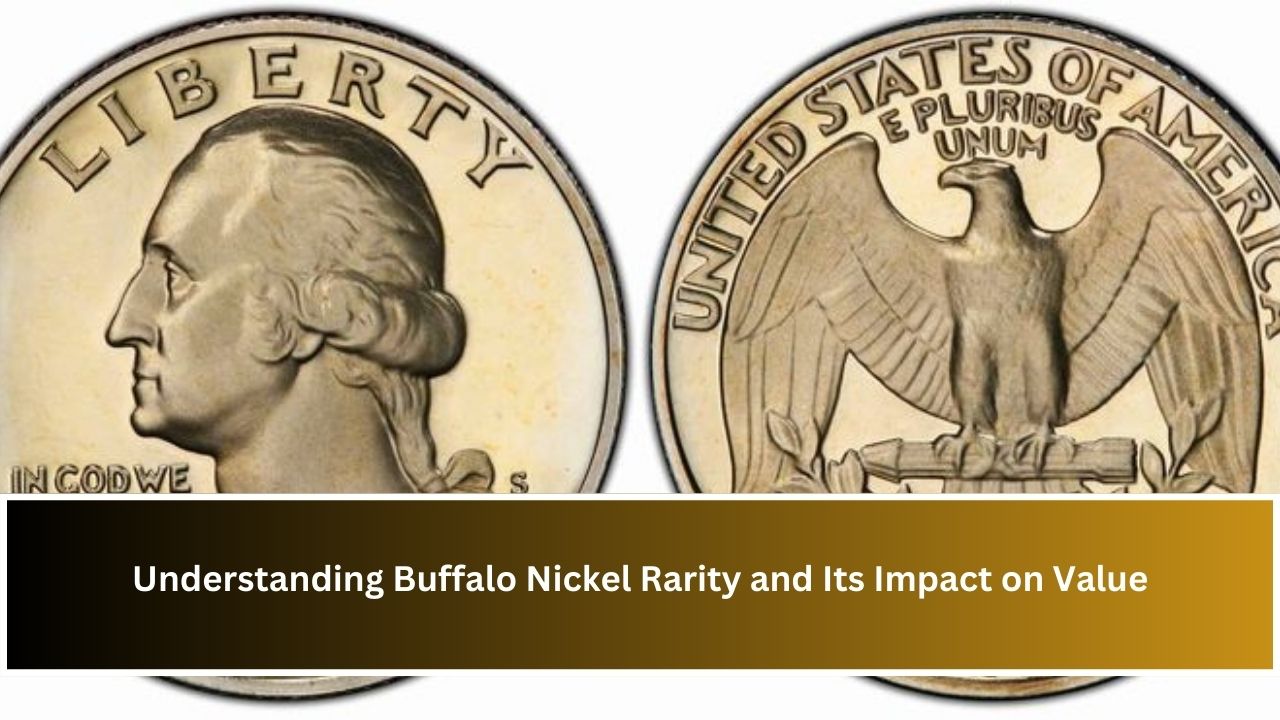The Buffalo Nickel, minted from 1913 to 1938, remains one of the most iconic coins in U.S. history. Known for its intricate design and symbolic representation of the American West, it has become a favorite among collectors. However, not all Buffalo Nickels are created equal. Factors like limited mintage, condition, and market demand have driven the value of certain coins to staggering heights. In this detailed guide, we will uncover what makes Buffalo Nickels rare, how rarity influences their worth, and what collectors need to know.
History and Design of Buffalo Nickels
Origins of the Buffalo Nickel
The Buffalo Nickel, also known as the Indian Head Nickel, replaced the Liberty Head Nickel in 1913. James Earle Fraser designed the coin with the goal of honoring Native American heritage and the untamed spirit of the West. The obverse features a composite profile of three Native American leaders, while the reverse showcases an American bison, often referred to as a buffalo.
Symbolism of the Design
The coin’s imagery highlights the nation’s cultural roots and the rugged beauty of the frontier. The Native American profile signifies strength and resilience, while the bison represents the wilderness and wildlife that shaped America’s history.
Transition from the Buffalo Nickel
After 25 years in circulation, the Buffalo Nickel was retired and replaced by the Jefferson Nickel in 1938. The transition marked the end of an era but solidified the Buffalo Nickel’s legacy as a collector’s item.
Factors Contributing to Rarity
Short Minting Period
Buffalo Nickels were minted for just 25 years, a relatively short span compared to other coin series like the Lincoln Cent. This limited production has made them scarcer, especially in well-preserved conditions.
Key Mint Locations
Three mints produced Buffalo Nickels: Philadelphia (no mint mark), Denver (D), and San Francisco (S). Coins from the San Francisco Mint, particularly in certain years, are rarer due to lower mintage.
Key Dates and Rare Coins
Some years and mint marks are considered more valuable than others:
- 1913-S Type 2: Known for its limited mintage and design adjustment, this is one of the rarest Buffalo Nickels.
- 1926-S: With a low production of around 970,000 coins, this year’s S-minted nickels are highly sought after.
- 1937-D Three-Legged Buffalo: This error coin, caused by a die polishing mistake, features a buffalo missing its front right leg, making it a prized collector’s item.
Errors and Variations
Error coins, like doubled dies, off-center strikes, and the famous Three-Legged Buffalo, add an additional layer of rarity and intrigue for collectors. These anomalies often fetch premium prices.
Rarity and Its Impact on Value
The Importance of Condition
The condition of a Buffalo Nickel significantly affects its value. Coins graded by professional organizations like the Professional Coin Grading Service (PCGS) or the Numismatic Guaranty Corporation (NGC) are more desirable. Coins graded “Fine” or better command higher prices, especially for rare dates.
Professional Coin Grading Scale
- Good (G): Heavy wear; some details are visible.
- Very Fine (VF): Moderate wear with clear details.
- Mint State (MS): No wear, sharp details, and luster intact.
Market Trends
Buffalo Nickels remain popular due to their historical and artistic significance. Rare examples, especially in Mint State or with unique features, can sell for thousands of dollars at auctions.
Table: Buffalo Nickel Rarity and Value
| Year | Mint Mark | Notable Feature | Estimated Value (Good Condition) | Estimated Value (Mint State) |
|---|---|---|---|---|
| 1913 | S | Type 2 Design | $50,000 – $100,000 | $500,000+ |
| 1926 | S | Low Mintage | $10,000 – $20,000 | $100,000+ |
| 1937 | D | Three-Legged Error | $5,000 – $15,000 | $75,000+ |
Tips for Collectors
Identifying Rare Buffalo Nickels
Look for key dates, mint marks, and errors. A magnifying glass and a basic guidebook are essential tools for spotting valuable coins.
Proper Preservation
Buffalo Nickels, especially those with higher grades, should be stored in protective holders to prevent damage. Avoid cleaning coins, as this can reduce their value.
Investing in Rare Coins
For those considering Buffalo Nickels as an investment, focus on acquiring coins with strong historical significance, professional grading, and unique features.
Conclusion
Buffalo Nickels are not just currency; they are historical artifacts that tell a story of America’s past. Their rarity, artistic design, and historical value make them a cornerstone of numismatic collections. Whether you’re a seasoned collector or just starting out, understanding the factors that influence the rarity and value of these coins is key to making informed decisions. With proper care and knowledge, Buffalo Nickels can be a rewarding addition to any collection.
FAQ’s
1. What makes a Buffalo Nickel valuable?
The value depends on factors like rarity, mint mark, condition, and whether the coin features errors or unique characteristics.
2. How can I tell if my Buffalo Nickel is rare?
Check for key dates (e.g., 1913-S, 1926-S) and mint marks. Error coins like the 1937-D Three-Legged Buffalo are particularly valuable.
3. Should I clean my Buffalo Nickels?
No. Cleaning can reduce a coin’s value by altering its natural patina. It’s best to keep coins in their original condition.
4. Are all Buffalo Nickels valuable?
Not all Buffalo Nickels are rare or valuable. Common dates in lower grades may only be worth a few dollars, while rare specimens can fetch thousands.

